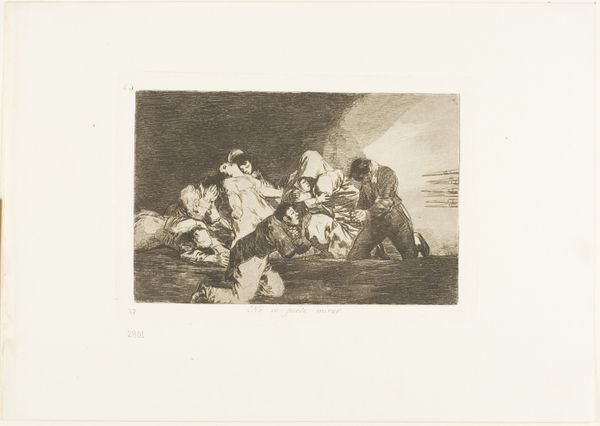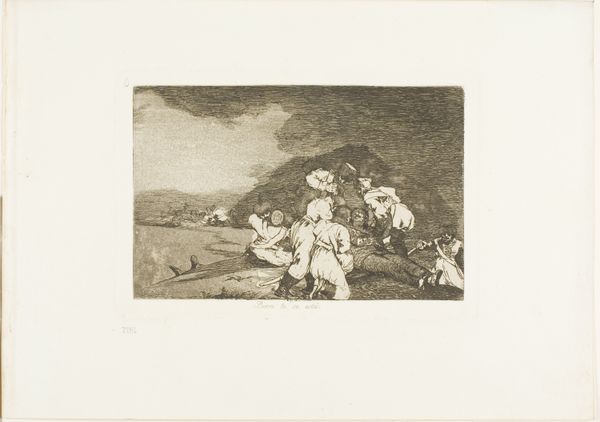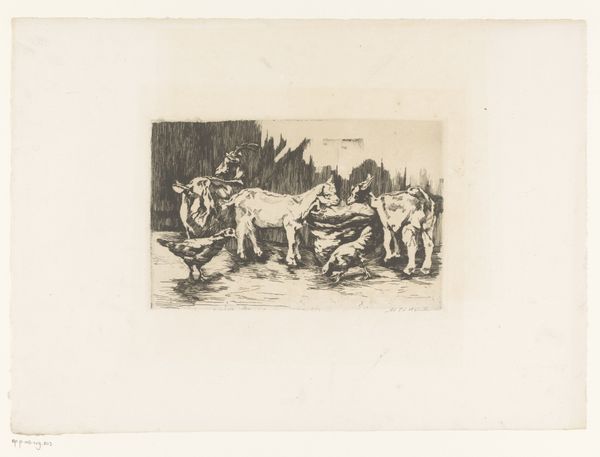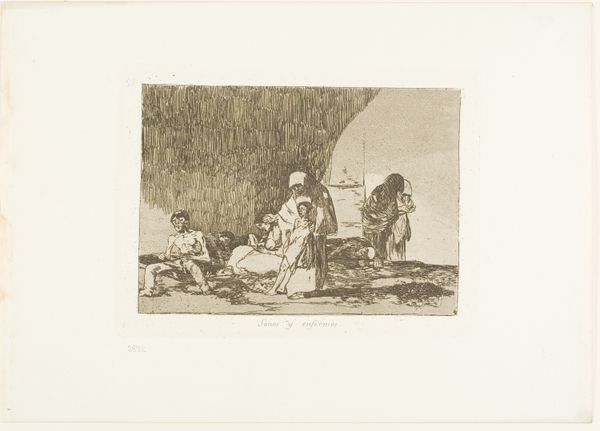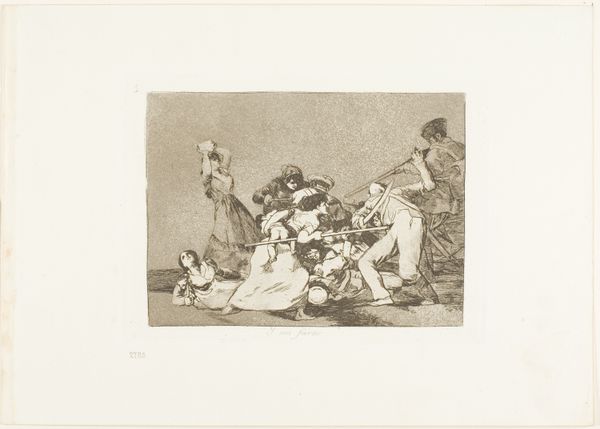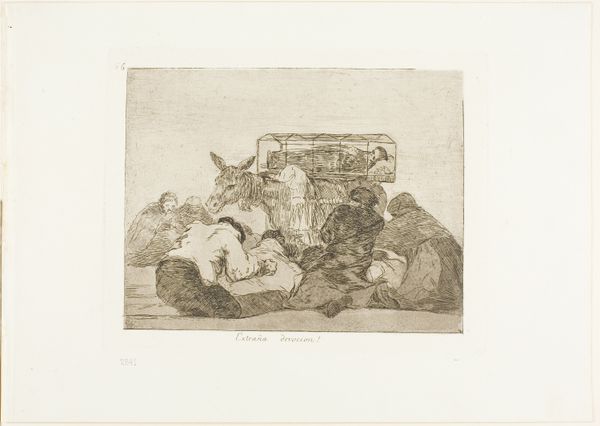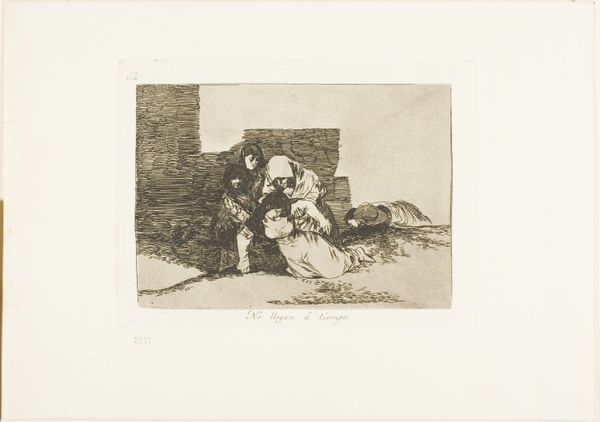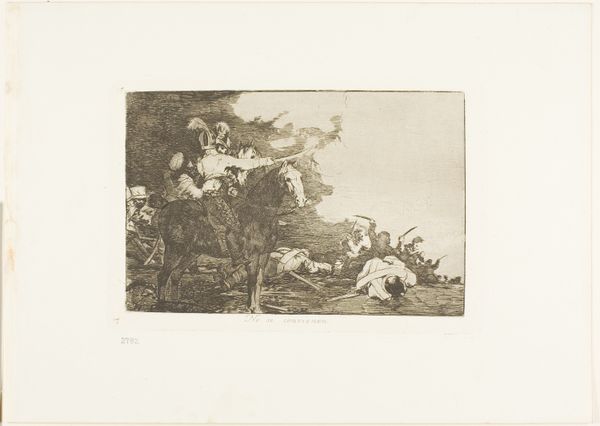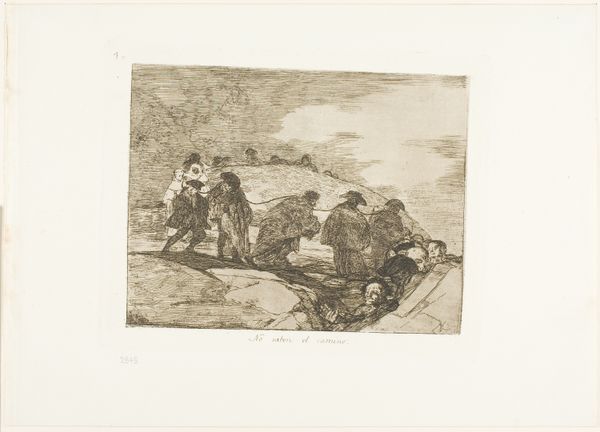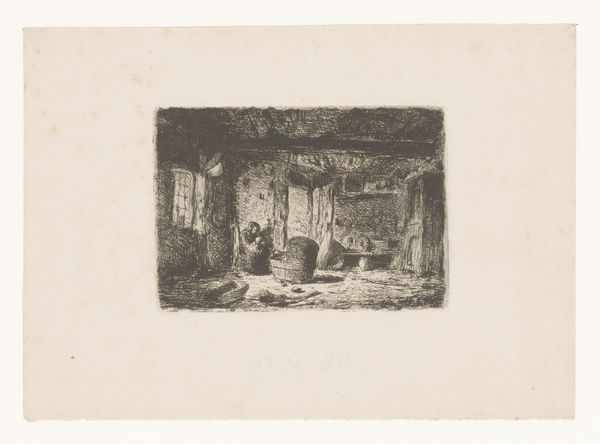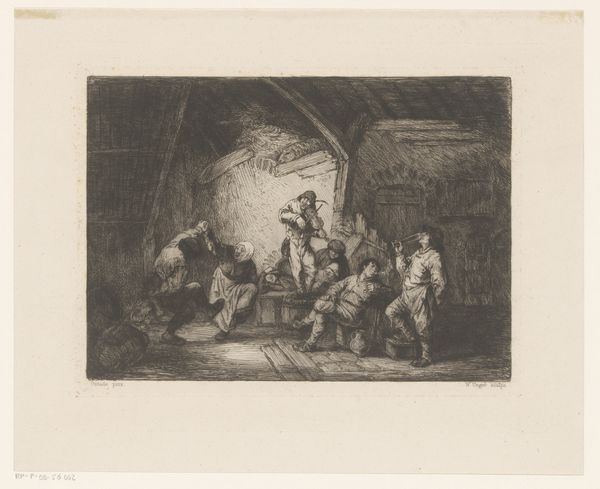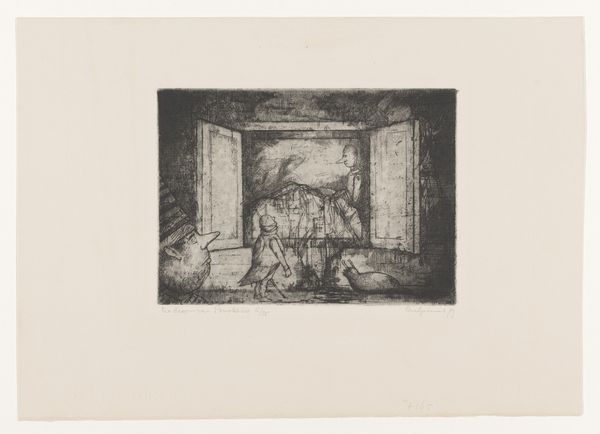
Bitter to be Present, plate 13 from The Disasters of War Possibly 1810 - 1863
0:00
0:00
drawing, print, etching, paper
#
drawing
#
narrative-art
# print
#
etching
#
war
#
figuration
#
paper
#
history-painting
Dimensions: 130 × 160 mm (image); 141 × 170 mm (plate); 240 × 340 mm (sheet)
Copyright: Public Domain
Editor: This is "Bitter to be Present, plate 13 from The Disasters of War" by Francisco de Goya, possibly created between 1810 and 1863. It's an etching printed on paper. The scene is incredibly unsettling. What's your interpretation of the work? Curator: The Disasters of War series unflinchingly confronts the brutal realities of conflict, specifically the Peninsular War. "Bitter to be Present" isn't just depicting violence; it's a visual indictment of power structures and the ways they enable and perpetuate atrocities. Notice how the aggressors are partially obscured, their faces hidden, which dehumanizes them and speaks to the anonymity of state-sponsored violence. Editor: That's chilling. I was so focused on the victim, I didn't think about that. Curator: Exactly. Consider how Goya uses light and shadow – the stark contrast intensifies the horror but also creates a sense of ambiguity. The setting, perhaps a prison or cellar, feels claustrophobic and contributes to the overall sense of helplessness. This raises the question: How does the architecture itself contribute to the feeling of oppression? Editor: The arches definitely add to the sense of being trapped. Were these images meant to be political statements? Curator: Absolutely. Goya, as a court painter, occupied a complicated position. While he served the monarchy, this series reveals his profound disillusionment and anger at the abuses of power he witnessed. He used his art as a form of resistance, giving a voice to the voiceless victims of war, particularly women. This brings us to an intersectional question: how does the work address the impact of war on female identity and agency? Editor: I hadn’t considered how targeted that violence would be. I'll definitely look at Goya’s work differently now. Curator: And hopefully consider how those patterns of conflict, dehumanization, and oppression continue to echo in our own time, and in media portrayals of women in war, and question our own positions.
Comments
No comments
Be the first to comment and join the conversation on the ultimate creative platform.
